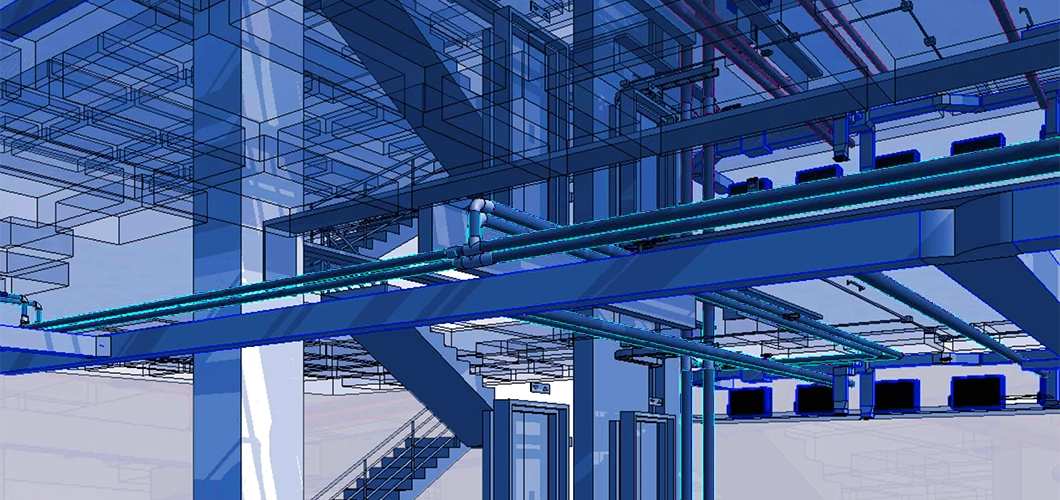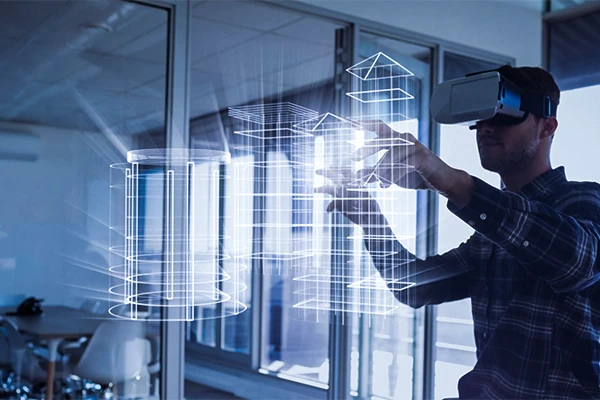
BIM Visualization: Its Evolution and Trends
What’s a construction project if you can’t visualize it during the design phase? That is a question that may arise in the heads of many people. And we must say that it is a valid question. Being able to visualize your concept even before the construction has started gives you control over various factors. Such as you can detect clashes early in the process and can have the designs modified as per the updated project requirements. This helps in reducing rework and keeping the costs in control.
BIM visualization also fosters seamless communication and collaboration between stakeholders. Let’s explore how BIM visualization has evolved over the years!
Evolution of BIM Visualization From 3D to 4D
In the past, Building Information Modelling (BIM) utilized 3D models to visualize a certain design for a construction project. The teams would rely on the information that they could derive from such models to build the space. With the advancement in technology, another dimension was introduced which is called the fourth dimension or 4D. This dimension is of time and it allows the stakeholders to efficiently define timelines for their projects.
Moreover, 4D helps the project teams manage the sequencing and scheduling of the various stages of a construction project. And the best part is that you can ensure on-time project delivery.
Virtual Reality (VR)

Virtual Reality (VR) continues to stun the world in its own unique ways. But we believe it benefits the world of construction and architecture the most. Want to know how? Let’s find that out!
By integrating VR into your BIM models, you allow yourself to delve in an environment that’s not real but it will provide you with a fully immersive experience. And when you are in a virtually generated space that has yet to be built, you will be able to make better and more sustainable decisions.
Augmented Reality (AR)
And how can we not mention Augmented Reality (AR)?! Okay so, AR offers improved communication and accessibility to data that might not be accessible through other tools. AR integration into BIM visualization is a powerful way to assess all that’s taking place in a construction project. What we like the most about the integration of AR into BIM is that it allows all the stakeholders to visualize a specific project through an immersive experience. Want to know what that can do?
When you utilize BIM data to see how a certain design will look in real life, you allow yourself to go through all the physical aspects of it. By doing so, you can detect clashes and immediately resolve them by collaborating with other project teams.
BIM Apps for Mobiles
Now that we have smartphones and tablets etc., we all like to perform our jobs on the go, right? Keeping in mind the need to stay connected to teams during a project, mobile BIM applications have been developed. These mobile apps allow the users to visualize and analyze the ongoing processes and also share their concerns or solutions in case of a conflict.
In addition, mobile BIM apps also ensure uninterrupted communication and collaboration which is crucial for informed decision-making.
Implementation of Cloud-based Technologies

Without communicating and collaborating with other project teams, you cannot work on a construction project. In order to bridge the gap, Cloud-based technologies were introduced and incorporated into BIM which fosters a collaborative workflow. Furthermore, when you have access to BIM models regardless of your location, you can stay in touch with your colleagues and share useful information as and when it’s required.
It is safe to say that by discussing the progress and evaluating various factors, the teams can continue to move forward. And that’s what matters the most for a smoother project delivery.
Computational Technologies for BIM
When it comes to utilizing BIM models for construction projects, another trend to keep up with is the implementation of computational BIM. By using such technology and then combining it with generative designs, the stakeholders can explore various other possibilities. Once the concerned team have relevant design-related insights, they can evaluate the existing designs through real-time BIM visualization to take effective measures.
You guys must be aware that time is a crucial element for construction projects. By making the most of the modern BIM visualization trends, one can meet their deadlines like a boss.
Standardized and Interoperable Models
To ensure that a project is delivered on time – that too without compromising on its quality, it is essential for all teams to work in standardized and interoperable models. Formerly, professionals working on their construction projects were not able to get things done mainly due to the lack of interoperability.
In addition, they were also dependent on assumption-based data. All of that made it quite difficult for them to execute their projects like they wanted to. Thanks to BIM evolution; the stakeholders can now work in a standardized ecosystem.
We would need more space to keep talking about how the evolution of BIM visualization and its modern trends have also evolved the AEC Sectors. However, it’s now time for us to conclude the blog. Before we do that, we would like to share a couple of factors that you must consider while taking us on board for your projects.
At DDC Solutions, our teams of experts are fully skilled to offer you services of the highest quality at various stages. We feel proud to mention that we provide you with solutions that are designed to cater to your specific needs. We don’t do that in isolation, in fact, you will find us every step of the way while we guide and train you with the necessary knowledge and skills. Also, our multidisciplinary teams are qualified to meet the set deadlines – offering you the peace of mind that you deserve.
Lastly, we would encourage you guys to contact us today and make the most of our cost-effective BIM services for your upcoming projects. And we can promise that you won’t regret hiring us as your project partners.


9 Responses